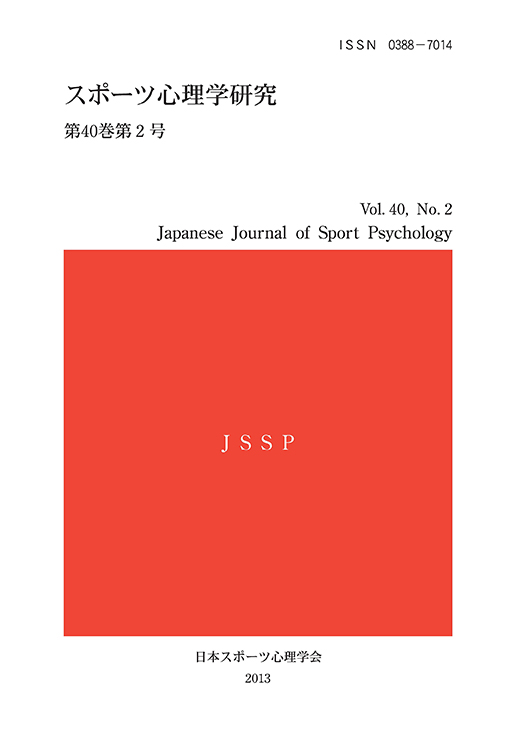40 巻, 2 号
選択された号の論文の14件中1~14を表示しています
- |<
- <
- 1
- >
- >|
原著論文
-
2013 年 40 巻 2 号 p. 91-108
発行日: 2013/09/30
公開日: 2013/11/19
[早期公開] 公開日: 2013/06/20PDF形式でダウンロード (4452K) -
2013 年 40 巻 2 号 p. 109-124
発行日: 2013/09/30
公開日: 2013/11/19
[早期公開] 公開日: 2013/08/08PDF形式でダウンロード (1299K) -
2013 年 40 巻 2 号 p. 125-137
発行日: 2013/09/30
公開日: 2013/11/19
[早期公開] 公開日: 2013/08/08PDF形式でダウンロード (1223K)
資料論文
-
2013 年 40 巻 2 号 p. 139-152
発行日: 2013/09/30
公開日: 2013/11/19
[早期公開] 公開日: 2013/06/20PDF形式でダウンロード (988K) -
2013 年 40 巻 2 号 p. 153-163
発行日: 2013/09/30
公開日: 2013/11/19
[早期公開] 公開日: 2013/09/18PDF形式でダウンロード (1027K) -
2013 年 40 巻 2 号 p. 165-172
発行日: 2013/09/30
公開日: 2013/11/19
[早期公開] 公開日: 2013/10/25PDF形式でダウンロード (814K)
巻頭言
-
原稿種別: 巻頭言
2013 年 40 巻 2 号 p. 173
発行日: 2013/09/30
公開日: 2021/08/27
PDF形式でダウンロード (240K)
総説
-
原稿種別: 総説
2013 年 40 巻 2 号 p. 175-184
発行日: 2013/09/30
公開日: 2021/08/27
PDF形式でダウンロード (744K) -
原稿種別: 総説
2013 年 40 巻 2 号 p. 185-192
発行日: 2013/09/30
公開日: 2021/08/27
PDF形式でダウンロード (563K) -
原稿種別: 総説
2013 年 40 巻 2 号 p. 193-200
発行日: 2013/09/30
公開日: 2021/08/27
PDF形式でダウンロード (617K)
展望
-
原稿種別: 展望
2013 年 40 巻 2 号 p. 201-209
発行日: 2013/09/30
公開日: 2021/08/27
PDF形式でダウンロード (672K) -
原稿種別: 展望
2013 年 40 巻 2 号 p. 211-220
発行日: 2013/09/30
公開日: 2021/08/27
PDF形式でダウンロード (639K) -
原稿種別: 展望
2013 年 40 巻 2 号 p. 221-228
発行日: 2013/09/30
公開日: 2021/08/27
PDF形式でダウンロード (602K) -
原稿種別: 展望
2013 年 40 巻 2 号 p. 229-236
発行日: 2013/09/30
公開日: 2021/08/27
PDF形式でダウンロード (1115K)
- |<
- <
- 1
- >
- >|
